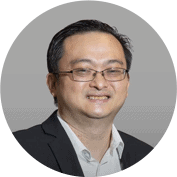On this National Day week, we should take some time to understand the Singapore Government’s enlightened approach towards managing their investment reserves and think about how we can approach our finances the same way.
The Singapore Government saves the difference between taxes collected and expenditures every year. If we examine our budget, we’ve been saving and investing aggressively right up to 2009. After 2009, however, it would initially seem that the Singapore government has become a lot more generous with social spending.

From 2009 onwards, Singapore no longer has a budget surplus like before.
Before 2009, the government was frugal and only spent half of the investment income earned from reserves. After 2009, the government determined that it can also expense 50% investment returns.
Together, the Net Investment Return Contributions or NIRC, consists of the following:
- Up to 50% of Net Investment Returns or NIR derived from increase in value of assets managed by Temasek, GIC and MAS.
- Up to 50% of Net Investment Income or NII from past reserves from the remaining assets.
The outcome is that Singapore can now expand social welfare and healthcare spending while still growing its reserves over time. But such growth may no longer come from taxation but may come from investment gains instead.
We can learn from the Singapore Government when it comes to our retirement planning:
a) Our younger selves should save a significant portion of our earnings
It was not easy for Singapore to survive in the 1960s, but it could count upon its conscientiousness when it came to money. Singapore took in more taxes than it could spend and was still able to build the economy.
We can learn from this by saving a significant chunk of our earnings when we are younger and investing for income. American books on personal finance suggest saving 10% of take-home pay, but this is a low-ball figure for Singaporeans who spend their single years living with their parents.
A good number for a person with two years of working experience to start with is 50% of the net salary.
b) If you can help it, never eat the corpus
The conventional approach towards personal finance supported even by academics is that we should ideally look at our lifetime of income earned in the workplace and spend in a way that smooths our expenses across time.
Wealthy people know that this is hogwash.
Corpus is a term in Middle English derived from Latin that stands for “main body”.
The financial analogy of corpus is your investment capital. The wealthy never eat the corpus or their investment capital.
Wealthy folks train their progeny to consume only their investment income. The idea is that consuming their capital means that their capability to grow their wealth further has been diminished. Money is never consumed over a lifetime and is, instead, passed down to descendants, much like Patek Phillipe watches.
We can learn by doing something slightly different from the Singapore government. We can choose to consume only our dividends. It is functionally not too different from half the dividends and capital gains if the portfolio is like an ERM portfolio which is almost evenly split between dividends and capital gains.
It is not easy to sustain the idea of consuming only half of the investment income. Singapore has sustained this for 44 years since 1965.
c) Spend only when lives matter more
Finally, accumulating is not so much about delaying gratification forever. In 2020, Singapore had a budget deficit spending of 13.9% to fight the pandemic, permanently addressing critics concern that money saved will never be spent within their lifetimes. As a result of this spending, the number of deaths from COVID-19 is scant compared to other countries in the world.
There are many advantages of having a store of money even if it’s never spent.
Singapore’s extensive foreign reserves deter currency speculators. At a personal level, meeting a wealth threshold qualifies a person as an accredited investor and gives them more options to invest in financial markets.
More importantly, savings in the past can reduce the severity of a disaster in the future. My mum spent $36,000 on a proactive angioplasty procedure despite not having any medical insurance because we’ve saved and invested the sums that were not paid in integrated shield plan premiums in the past.
Today we can be thankful that most of the population is already vaccinated with mRNA shots.
In conclusion, we should be looking at how the Singapore Government manages their investments to inspire our approach in personal finance. As for me, I’m still at the stage that is more similar to Singapore before 2009. My expenses are a small fraction of my investment income. Hopefully, when I have a larger share of my portfolio in growth counters, I can shift my stance to be able to spend my capital gains.


It was achieved at much sacrifice & forbearance, mostly enforced by central authority. Highly doubt if any Singaporean (including 3G & 4G ministers) in the last 40 years subjected themselves or their kids to even 20% of that standard.